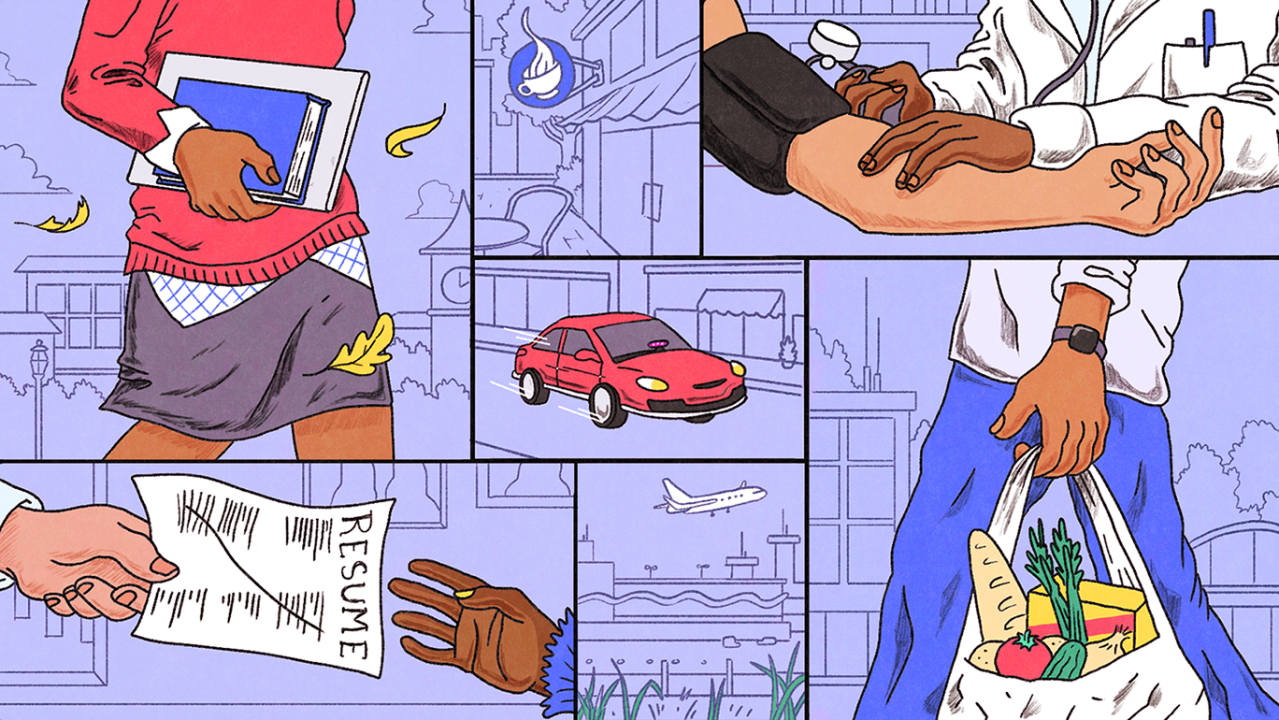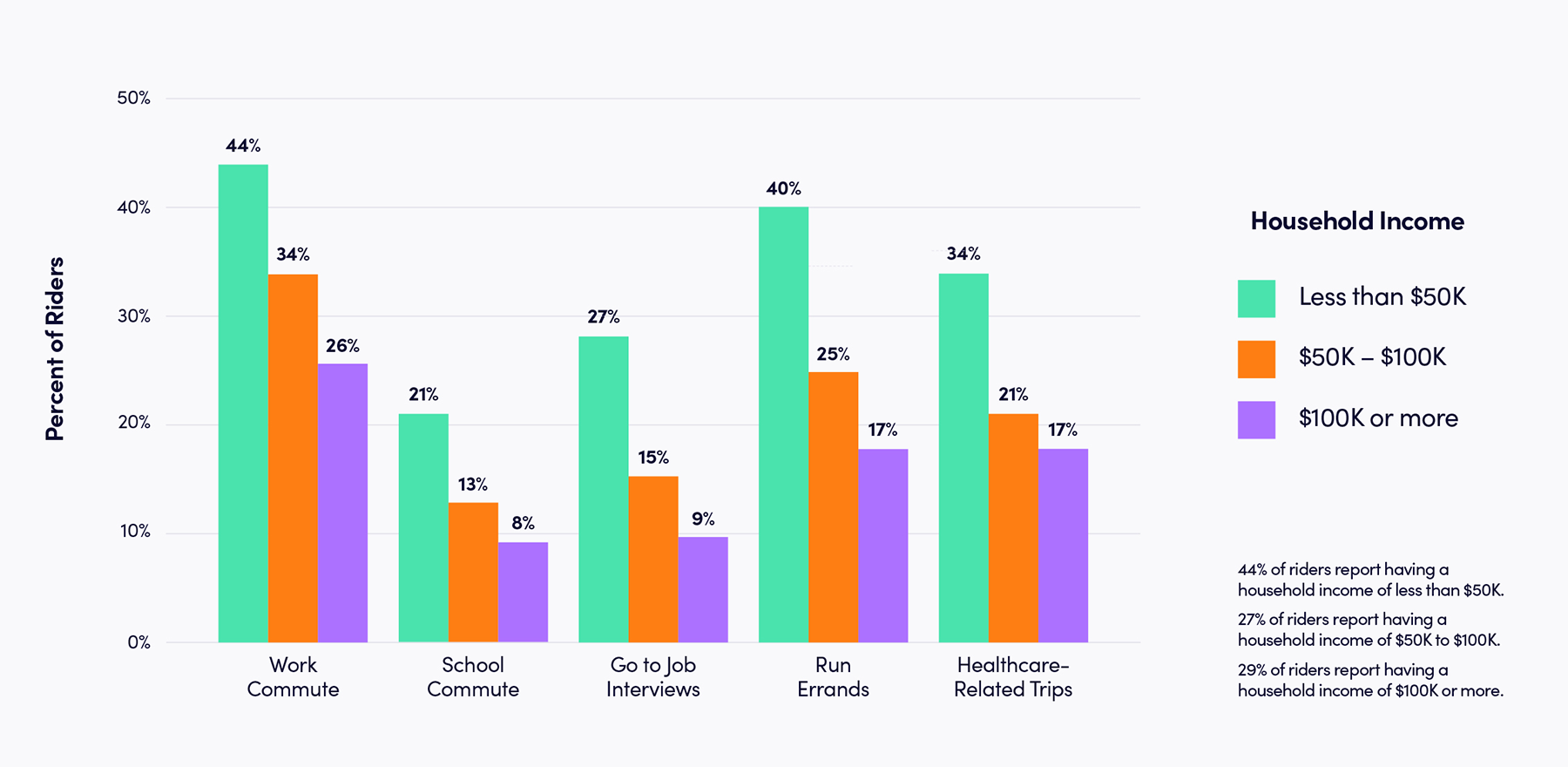What do you use rideshare for? It depends on your bank account

Lyft
What do you use rideshare for? It depends on your bank account
illustration showing people running errands, going to doctor appointments, going to work
Your answer likely depends on all sorts of unique factors. If your job involves frequent travel, for example, you probably hail rides to the airport; if you don’t own a car, you may use rideshare to run errands. But underlying all these possible use cases is one powerfully predictive data point: your bank account.
New research from Lyft reveals that rideshare use varies dramatically with income level. The company surveyed more than 30,000 riders across the U.S. and Canada and discovered that those with medium and high household incomes are more likely to hail a ride for leisure activities like bars, travel, and restaurants. Meanwhile, a greater percentage of lower-income passengers depend on rideshare for vital services like getting to work and health care appointments.
![]()

Lyft Economic Impact Report 2023
Riders were asked about their destination and their answers were analyzed by income, revealing a very clear pattern across all categories
bar graph showing rider usages and different income levels
Lyft’s largest category — at 44% — is low-income riders, defined as those with annual household incomes under $50,000. Around 27% of riders are middle income (making between $50,000 and $100,000). And 29% are high-income households (making $100,000 or more).
The pattern identified shows low-income individuals relying on Lyft for help with their most important transportation needs. Around 44% of them use rideshare for commuting to work, compared to only 26% of high-income riders. Low-income riders are also far likelier than high-income ones to use rideshare to access rides to school (21% vs. 8%), job interviews (27% vs. 9%), health care appointments (34% vs. 17%), and to run errands (40% vs. 17%).
Meanwhile, high-income riders are far more likely than low-income riders to use the platform to access rides to and from the airport (81% vs. 40%) and for leisure travel (63% vs. 29%). The same pattern holds true for middle-income riders, who also use the platform for access to transportation to and from the airport (64%) and leisure travel (49%) more often than low-income riders.
These results support prior findings of independent researchers, who also observed that low-income households increasingly rely on rideshare. A 2020 study of ride subsidy programs found participants preferred rideshare services to taxis and paratransit because they were on-demand and offered more comfortable and dependable service. A 2021 study of low-income individuals in Michigan also found that rideshare “can be especially beneficial for the low-income, aged, car-less, and disabled travelers.”
All of which is to say, even though app-based rideshare services are relatively new in the long history of transportation, they’re already playing a crucial role in people’s lives, especially for those with fewer resources.
This story was produced by Lyft and reviewed and distributed by Stacker Media.